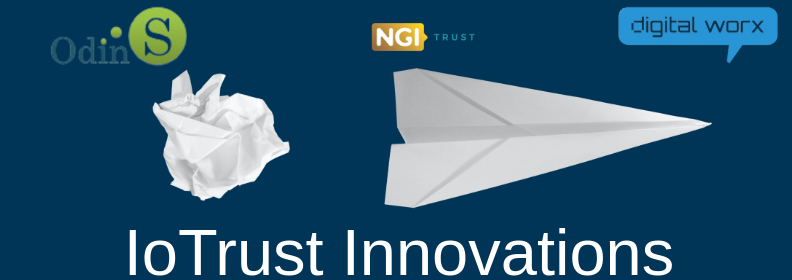Innovations of the IoTrust

The IoTrust project will achieve its objectives by designing, developing and integrating a novel bootstrapping protocol, peer to peer distributed storage protocol, distributed ledger technology and inventive trust monitoring algorithm. The main innovations of the IoTrust are following.
- Secure Bootstrapping of LO-CoAP-EAP built with Internet standards for secure setup of IoT devices.
- Trust Monitoring: Human-centric trust report of IoT devices to simplify the maintenance decisions making of inexpert end-users for achieving cost effective and sustainable IoT infrastructure.
- Decentralized Peer-to-Peer Reprogramming: High resilience against DDoS attacks by decentralized distribution of encrypted firmware, configurations and patches based on peer-to-peer IPFS networks.
- Trusted layer for IoT Networks: DTL-based privacy-enhanced storage and IDs management to identify IoT devices and calculate their trust scores.
The core technologies used in the IoTrust are following.
It integrates the use of Authentication, Authorization and Accounting (AAA) infrastructure, the Extensible Authentication Protocol (EAP) Constrained and Constrained Application Protocol (CoAP).
Interplanetary File System (IPFS) is distributed system for storing and accessing files. It will be utilized to store firmware files and security patches of IoT devices.
Device and firmware metadata information will be stored in a distributed ledger. Hyperledger Besu will be utilized for this task. It is an open-source Ethereum client developed under Linux Foundation.
It is Low Power Wide Area (LPWA) networking protocol designed to wirelessly connect battery operated devices. The end devices in the IoTrust framework will communicate using LoRaWAN protocol.
